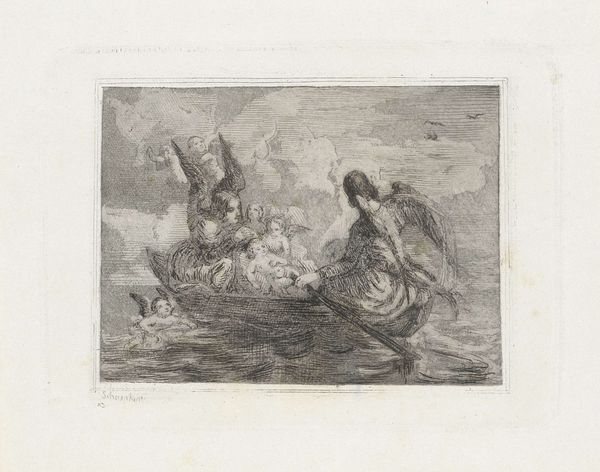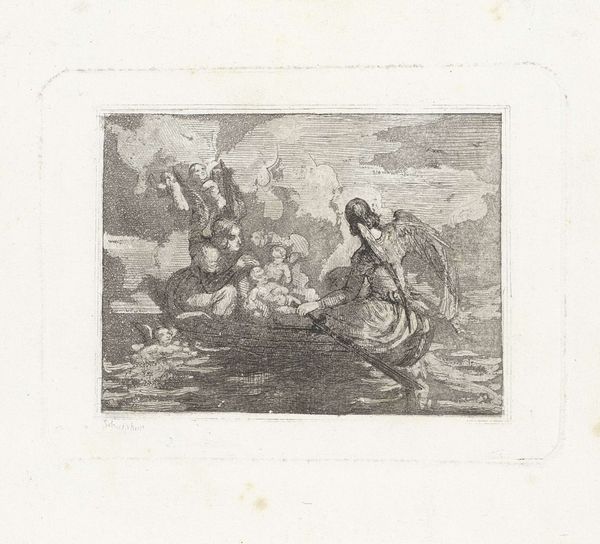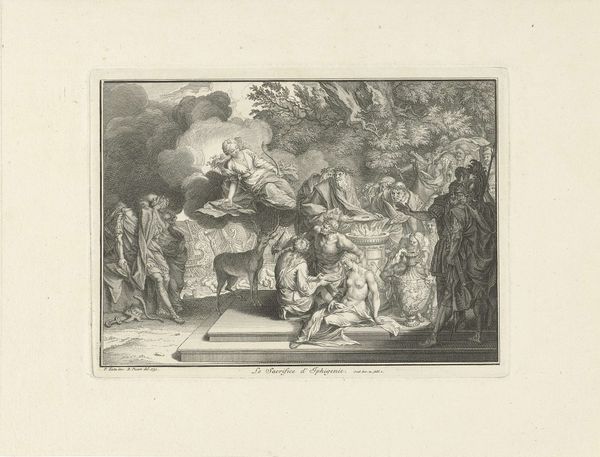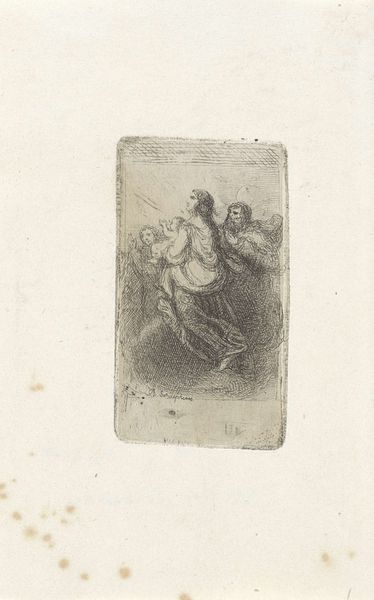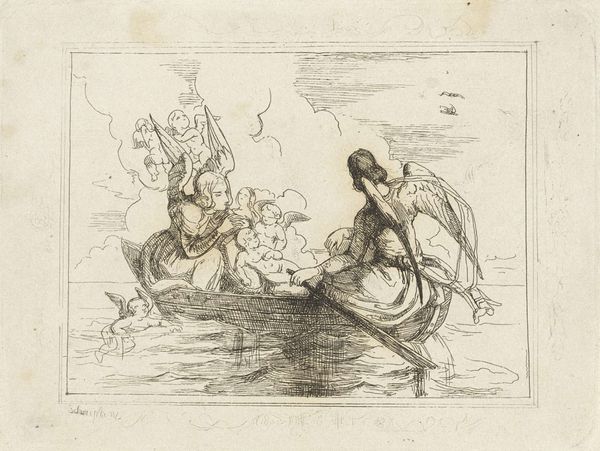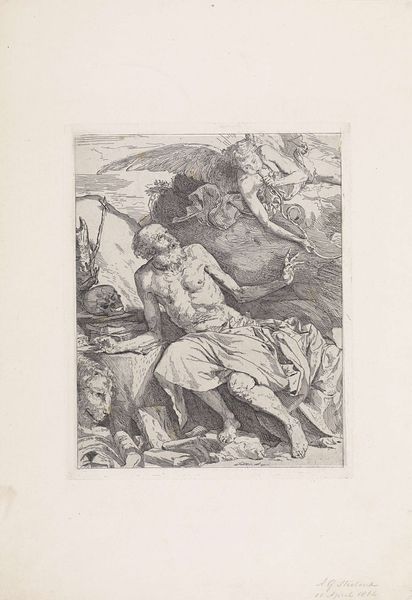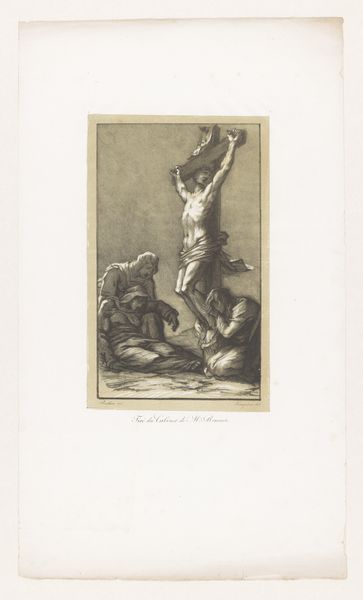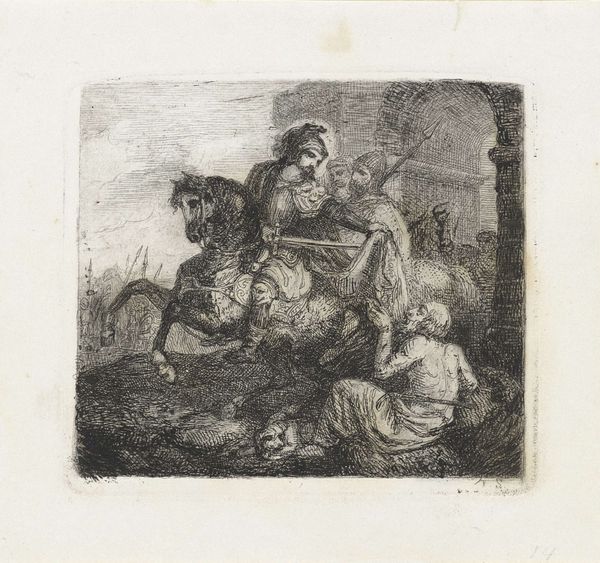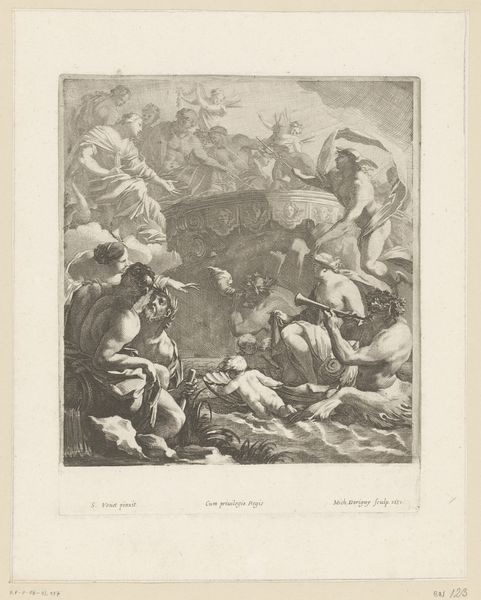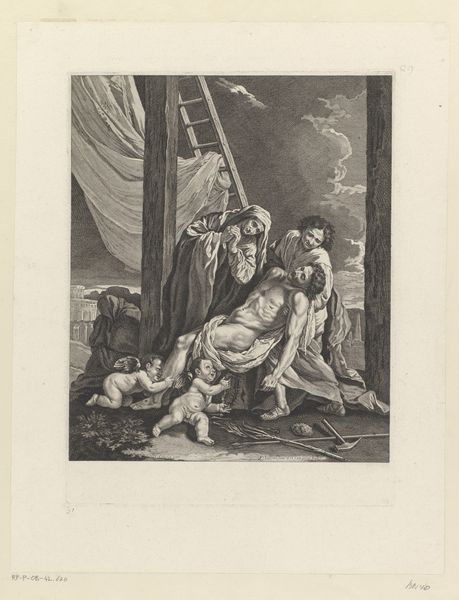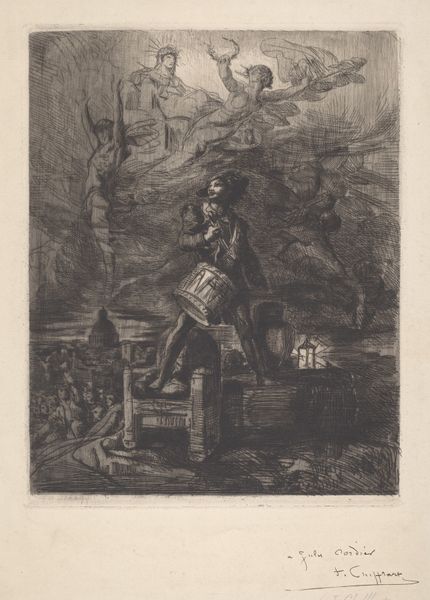
Dimensions: height 106 mm, width 139 mm
Copyright: Rijks Museum: Open Domain
Curator: This is "Varende engelen met het Christuskind," or "Sailing Angels with the Christ Child," an etching by Theodoor Schaepkens, likely created between 1825 and 1883. Editor: It feels otherworldly. There’s a dreamlike quality to it. The angels seem to emerge from the ether, the boat cuts through water that mirrors the sky itself, and the light, despite the limited tonal range of the etching, feels luminously Baroque. Curator: The etching process itself, acid biting into a metal plate, is crucial here. Consider the labor involved in creating those delicate lines, cross-hatching to build up tone. Etchings like this were relatively affordable, enabling broader distribution of religious imagery. It democratized access. Editor: Democratization—that's a key element. The imagery presents a distinct hierarchy, though. We have the central figures of Mary and the Christ Child surrounded by cherubic attendants in what seems like a vessel navigating both spiritual and physical realms. This construction elevates their sacredness, reinforcing the patriarchal power structure through devotional imagery intended for wide consumption. Curator: And that's achieved, in part, through this very material process. Etching allowed for reproduction on a scale unimaginable a century prior, extending the reach of religious doctrine. Look how meticulously the details are rendered. Schaepkens wasn't just depicting a scene, he was crafting a portable artifact designed for devotional use. Editor: Right, and understanding this as a manufactured object forces us to recognize how gendered the roles are. It's worth asking who consumes it and what that means. The soft rendering emphasizes the tender, almost maternal quality attributed to Mary. It presents a model, consciously or unconsciously, for the domestic sphere, solidifying prescribed roles. Curator: These reproductive prints helped disseminate such models within domestic environments, but their materiality complicates any straightforward reading. Each individual print bears the trace of the artist’s labor and the chemical process, which can vary depending on factors like temperature and the acidity of the bath. Even mass produced, each impression has unique properties. Editor: A compelling reminder that every image, even those intended for mass distribution, carries nuances that shift its interpretation based on who beholds it. Curator: Precisely. Examining both the technique and broader impact offers an expansive understanding. Editor: I agree. Seeing art this way shows me how much more I still have to think about.
Comments
No comments
Be the first to comment and join the conversation on the ultimate creative platform.
